Helsinki Music Centre Selects L-Acoustics L Series for Superior Sound Clarity and Architectural Integration Helsinki Music Centre Selects L-Acoustics L Series for Superior Sound Clarity an...
Intersonic delivers comprehensive audio solution as part of major technical renovation at prestigious Finnish cultural institution, innovatively repurposing existing L-Acoustics systems for an eco-conscious approach
HELSINKI, FINLAND – April 2025 – Helsinki Music Centre, home to Finland’s two most prestigious orchestras, has completed a significant technical renovation featuring an L-Acoustics L Series loudspeaker system as its centrepiece. The audio upgrade, part of a larger renovation that included lighting systems and new mixing consoles, provides superior coverage and clarity in the venue’s challenging acoustic environment while elegantly overcoming previous architectural and sight line constraints.
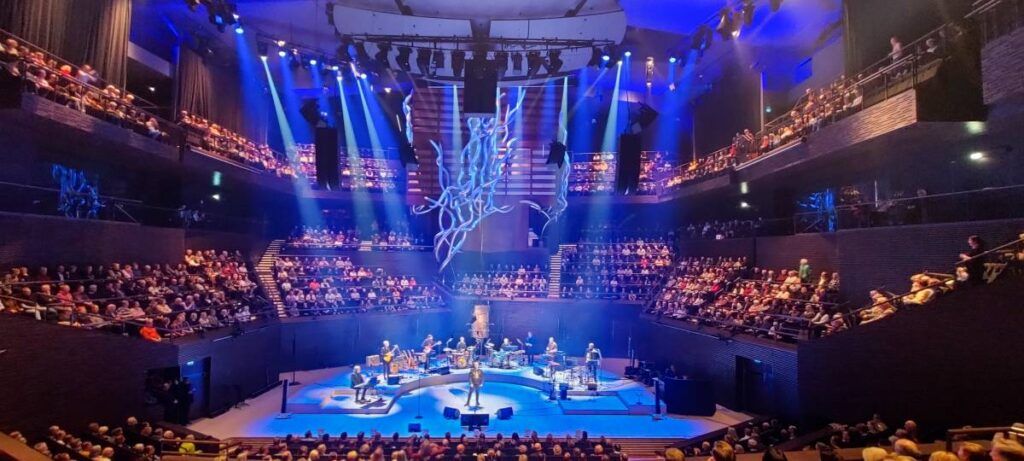
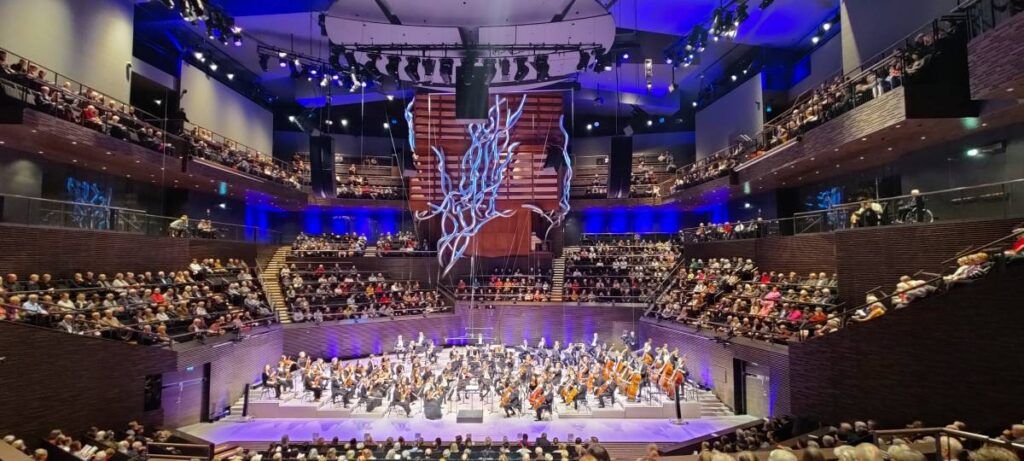
Sustainable sound solutions: upgrading while preserving
The 1,700-seat concert hall, which hosts approximately 1,500 events annually across its various spaces, presents unique challenges for amplified performances. Hosting international artists, television productions, and radio broadcasts in addition to classical music, the hall requires a solution that could deliver clear, controlled sound throughout its unusual 360-degree seating configuration.
“The reverberation time in the hall is quite long, which is a challenge for events with amplified sound,” explains Jori Tossavainen, Head of the studios at Helsinki Music Centre. “Our goal for this upgrade was to improve coverage, achieve clarity throughout the space and to better manage noise pollution especially for the seating areas beside and behind the stage.”
The installation, executed by L-Acoustics Certified Provider Intersonic, demonstrates a commitment to sustainability by intelligently repurposing the venue’s previous L-Acoustics systems. The existing Kara system, previously in the main left-right positions, was repositioned to manage rear coverage in the 360-degree configuration. Additionally, the venue’s original Kiva system, which predated the Kara installation, was redistributed to improve coverage in the balcony areas – creating an economically and ecologically conscious solution that maximises value while minimising waste.
Precision engineering: overcoming architectural challenges
A key challenge in the venue’s sound system evolution has been negotiating architectural constraints with acoustic needs. The earlier Kiva system had been positioned above a high acoustic canopy approximately 15 meters above the stage – an architecturally driven decision that created severe coverage issues, particularly for front rows. The subsequent Kara system improved matters by being positioned below the canopy but still had to be placed well in front of the stage and over the audience due to size limitations.
“The main goal was to move the PA rigging points to a better place,” notes Tossavainen. “Since L2 is so much smaller, while delivering even better SPL and coverage, we could place it below the canopy and position it properly over the stage rather than the audience – which also had the benefit of clearing sightlines for the lighting and video teams.”The comprehensive solution now features 22 discrete loudspeaker arrays throughout the venue. The main system consists of two L/R arrays of one L2 over one L2D to cover the main parterre seating area. Two arrays of four Kara II cover the side seating while two further arrays of six Kara II each cover the rear audience area. Twelve arrays of three Kiva distributed throughout the space provide even coverage for the balcony sections. Low frequency extension is provided by a centrally flown hang of four KS28 subwoofers, which can be operated in either standard or cardioid mode depending on event requirements. The system is powered by four LA7.16i, one LA12X, three LA4X and seven LA8 amplified controllers.
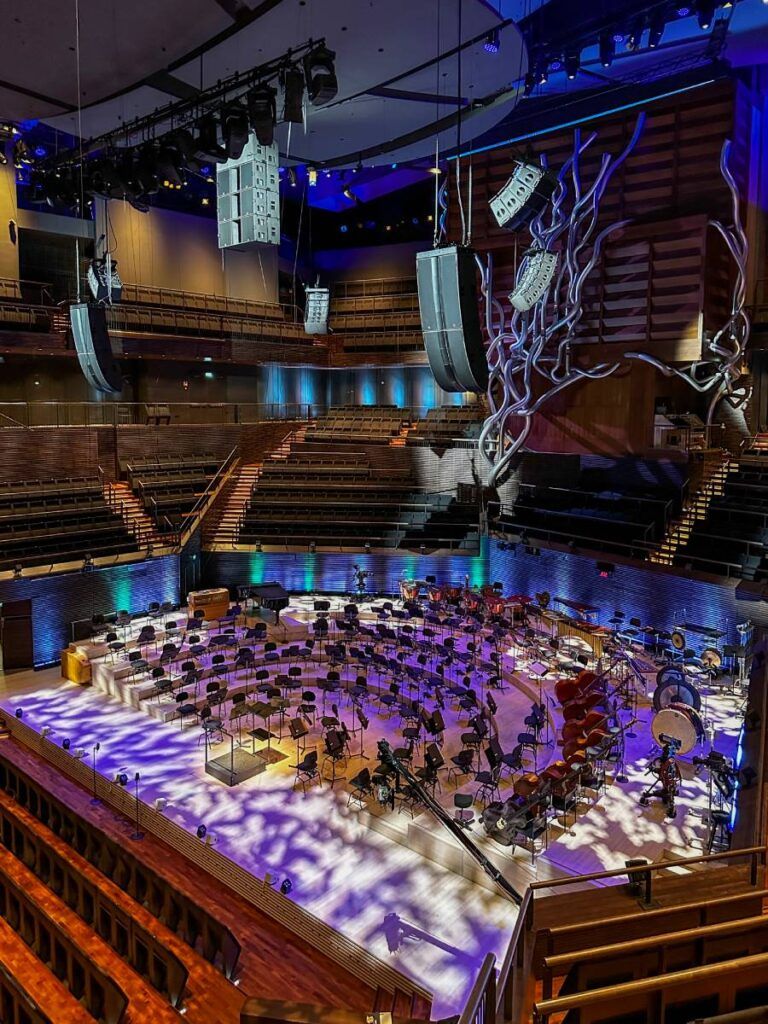
Inherent cardioid design: managing noise in complex environments
The L2’s inherent cardioid capabilities have proven particularly valuable in controlling sound in the challenging 360° seating arrangement. “The main challenge in this hall with 22 speaker hangs is the noise pollution when they combine together,” explains Pauli Molnar, Sales Manager at Intersonic. “The inherent cardioid capability of L2 is helping us significantly with the long reverb time, especially in the low-mids and lows. It really reduces the noise pollution and makes the sound much clearer.”
The team initially deployed the system in cardioid mode but later switched to supercardioid to better serve side-seated audience members who sit significantly closer to the arrays than those in rear positions.
A key advantage of the L Series system was its smaller form factor compared to alternatives. “When we first saw L2, I thought, ‘That is not for us,'” admits Siitari. “But when we reviewed the Soundvision modelling, it was like, ‘Wow, this can’t be real.’ It fits so nicely in this auditorium and it’s so compact.”
Advanced Adaptability: Software-controlled precision
The versatility of the L Series system has already proven valuable beyond standard concert applications. In a recent television production at the venue, engineers utilised Soundvision software and LA Network Manager to electronically adjust the D-min settings on the L Series. This allowed them to precisely remove coverage from approximately ten front rows where a catwalk and discussion area had been built, creating a clean cut-off point for high frequencies without any physical adjustments to the rigging.
“It worked scarily well,” notes Oliver Siitari. “I could see the exact point where I wanted the sound to start in Soundvision’s detailed CAD integration, and it was like cutting with a knife—the high frequencies all of a sudden came back exactly where needed. Previously, we’d have to mute the lowest speakers and try tilting arrays, which was neither as fast nor as efficient.”
The subwoofer arrangement provides additional flexibility, with four KS28 hung in the centre of the venue that can operate in either cardioid or omnidirectional mode depending on the seating configuration and program material. “Especially with subs, 360-degree venues are difficult in many ways,” adds Siitari, Head of Sound at Helsinki Music Centre. “But hanging them all in the same place in the dead centre works best in this hall.”
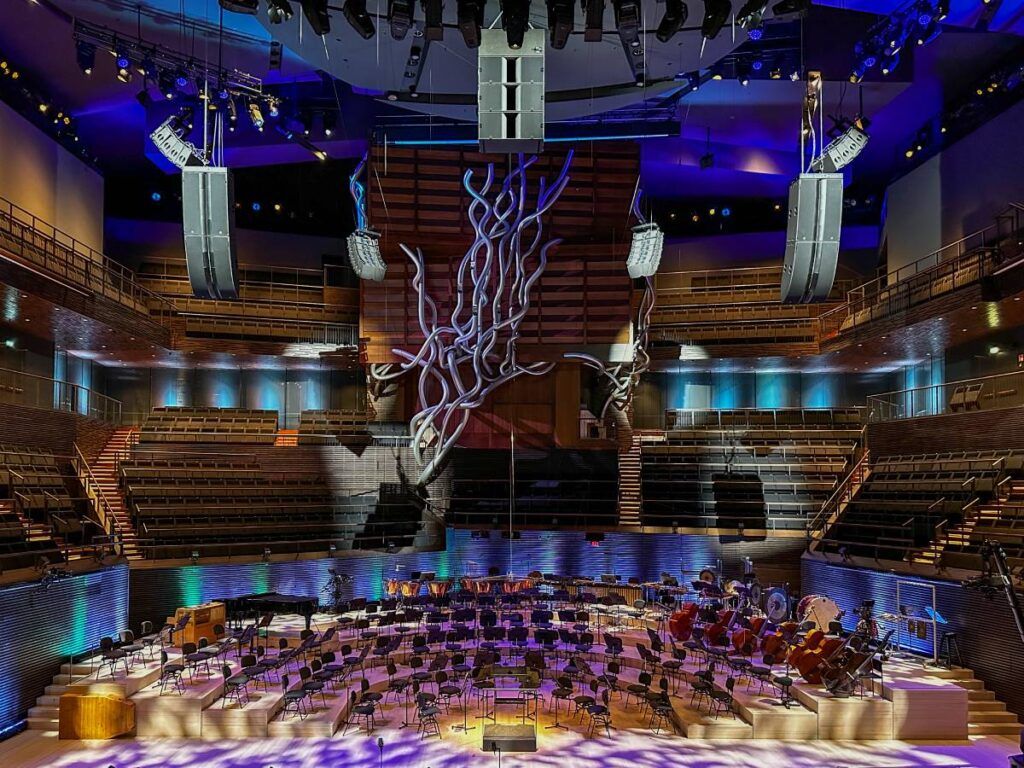
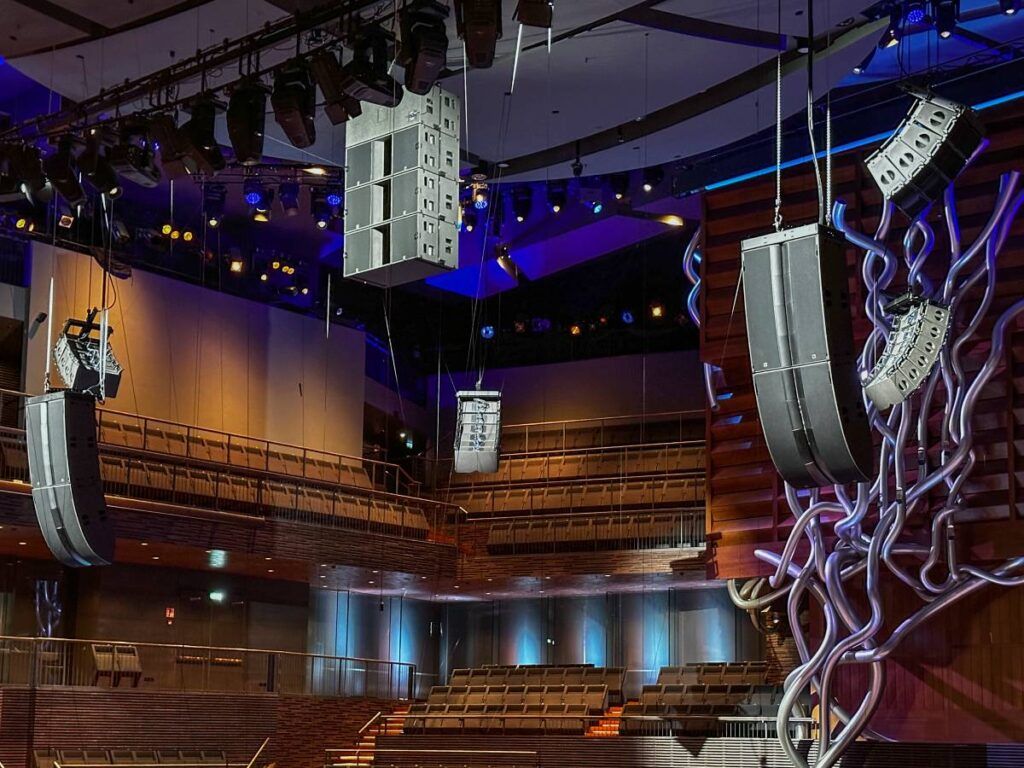
Seamless Integration: Performance meets Aesthetics
While some stakeholders initially expressed concerns about visual impact, particularly regarding the positioning of subwoofers in front of the venue’s newly installed, visually striking pipe organ, the overwhelmingly positive feedback from engineers and audiences has validated the design decisions.
“The coverage and tonality from the L2 has been exceptional,” confirms Tossavainen. “People who have mixed here before and return now have given nothing but positive feedback. There’s a lot happening that’s invisible to the naked eye — like dramatically improving clarity and definition throughout the hall — that’s been a big part of the success. I think we’re now at a point where all teams, including those previously concerned about visual impact, recognise the value of the system, and the results speak for themselves.”
Press release assets are found by clicking here.